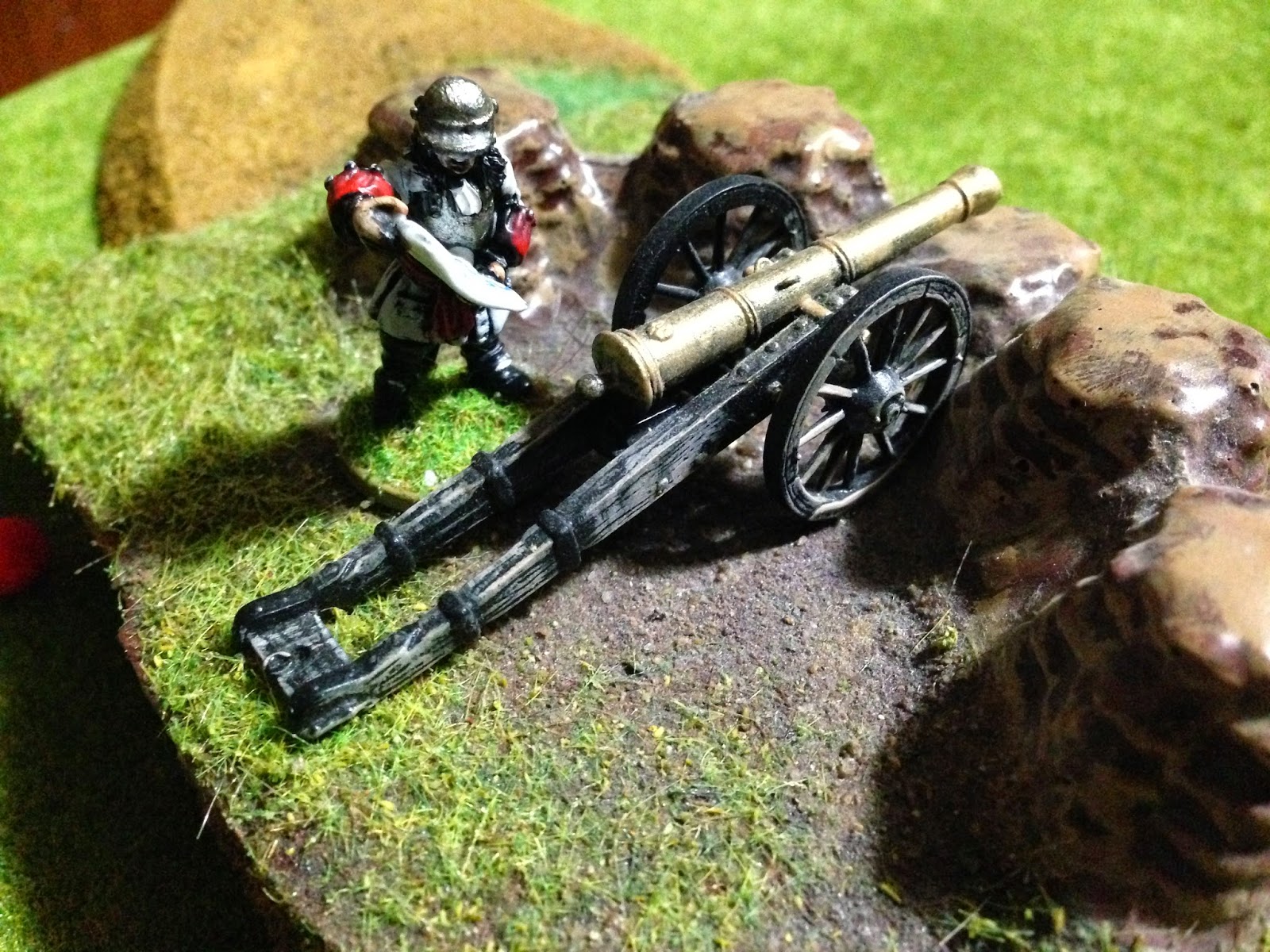Overall, the rules give a decent game - so we were less concerned with the actual history on this occasion, hoping to find a set of rules that could ultimately be used for the American War of Independence (Black Powder).
Of course, with our positive experience with Maurice, there had to be comparisons - good and bad. Main points of discussion that came to light included:
- The Pike & Shotte / Black Powder rules are straight forward and lend themselves to using multiple players, unlike Maurice, which is pure player vs player (despite its attempts to be otherwise).
- Although a good read over the rules is required, they are eminently 'pickup-able' with some classic mechanisms - including those (sometimes) unfortunate 'characteristic' style additions which have found their way from warhammer style rules. This is no surprise considering the authors involved of course. I say unfortunate, as these little advantages seem to get forgotten mid game, unless you have multiple players to remember the respective benefits and bonuses of their individual units.
- I missed the card mechanic of Maurice; although the Black Powder rules have a command mechanism which can (and ultimately did) considerably restrict the freedom of movement of brigades and battalia and tried to restrict movement and command, it seemed more random than with Maurice - where most of the time your turn was based on resource management and the restrictions that go with it; a player could spend barrels of cards just to make one thing happen if desperate enough, at the expense of everything else. With Pike & Shotte, you face the blind luck of a command dice roll, with some modifiers - although a better commander will get to do more of what he wants.
- Although appearing basic, hand to hand combat and charging takes longer, and is less intuitive, than Maurice.
- One issue with Maurice sometimes is that it is so fast that units disappear very quickly, leaving an almost empty battlefield (see the Boyne game last year for instance) - but that's purely a visual issue. That doesn't happen with P&S, as mauled units can still stay on the table if they pass a break test.
Having said all that, it's still a decent set of rules and will require more testing/playing- especially so where the projected AWI games are concerned. Warlord Games also do excellent scenario books - something which is lacking for the Maurice rules.
And so to battle:
A nice linear battlefield. A lot of cover and an epic cavalry battle promised on the French right.
View from the French right. Dragoons, cavalry and elite guard cavalry will meet head on.
On the Allied right, early command points enable a triple move from the Irish contingent against the prepared defences at Walcourt.
View from a pub in Walcourt.
...while the Irish remain too weak to assault the English units, and trade musketry.
The French centre is strengthened by the presence of the Gardes Francais, and delayed arrival of allied reinforcements means that they have to attack quickly.
French gunners cease fire as the latest copy of
View from the Allied command position in the centre.
The French assault comes on, as the elite Dutch guards watch its approach. The French attack was considerably hampered by poor activation rolls, and it took many turns for it to get under way. In Maurice, the problems would have been different - in that sections of the battlefield would have remained static (but still using musketry) as the focus was placed where it needed (or could be managed) to be. With these rules, there's more of a random element in terms of where the commander can focus his attention.
French dragoons capture the church in the centre.
...while a massive French cavalry attack gets underway.
On the Allied right, covered English regiments give accurate fire toward the bogged down Irish.
Cavalry charges go on for many turns on the right. The victor will be able to turn the flank - but so many units are involved.
(We actually ran out of markers for casualties - it was becoming a bloody stalemate.)
...as on the French left - all that is left of a unit in the all too brief assault is a bunch of markers as it fails its break test.
The high water marks of the French attack are the ground taken in the centre...
...and the gloire of the Gardes Francais , (although they're about to be forced to take a break test due to withering fire from the Dutch).
We didn't get a proper resolution to the scenario (although it was definitely going the Allies' way), and the rules will need a little more testing before using again - but all in all, a nice set and not too restrictive - although the command activation could use a little development. Having said that, we've probably been swayed a lot by the battlefield management style play of Maurice.
...while American Revolution troops wait in the wings (yes - keen eyed viewers will note only one American unit painted so far. I'm considering using the 'dip' method for the rest in order to get things moving.) We'll most likely try the Freeman's Farm scenario in the Black Powder rulebook as the first game.
...until next time.





























